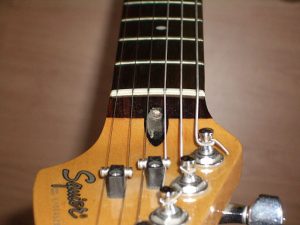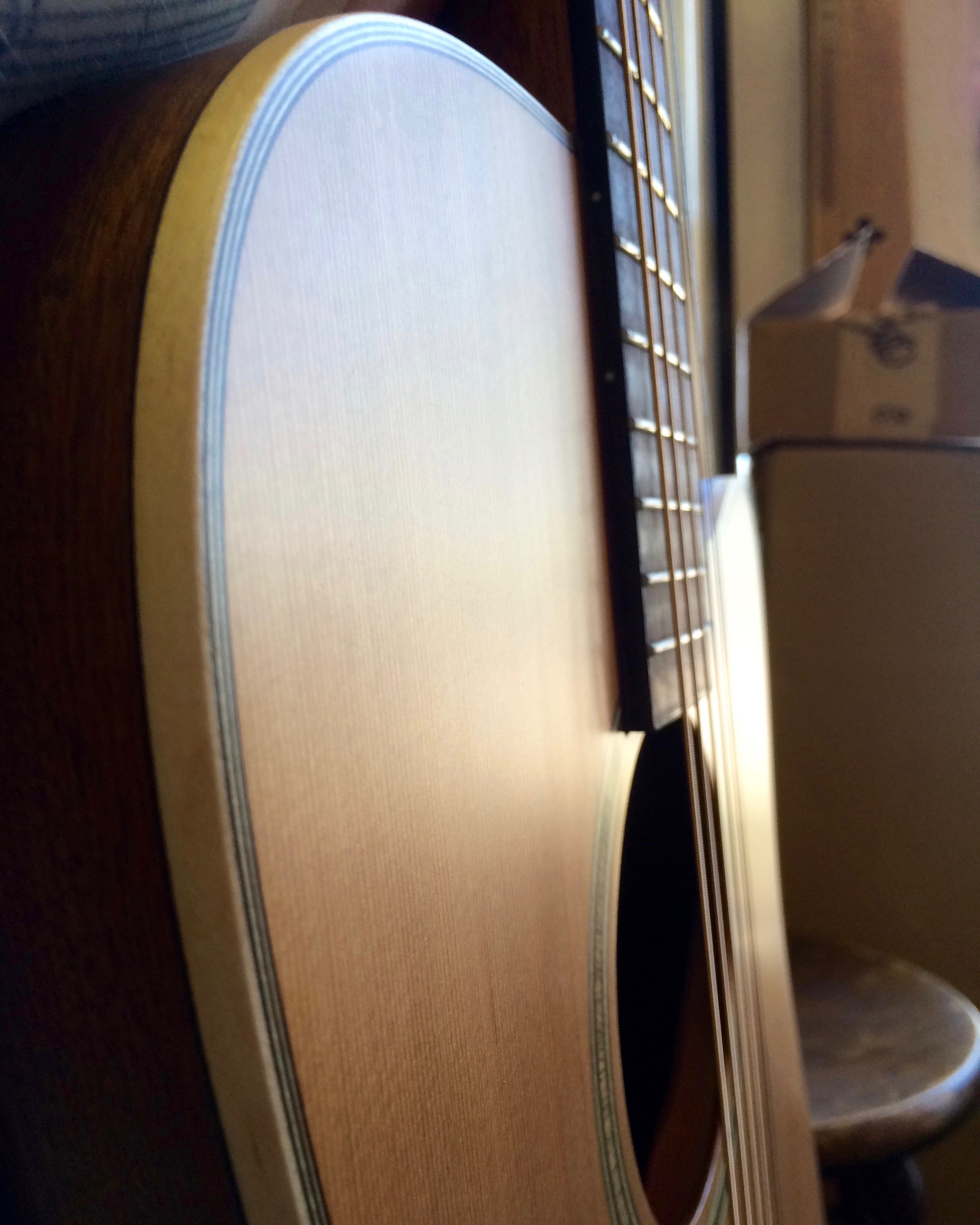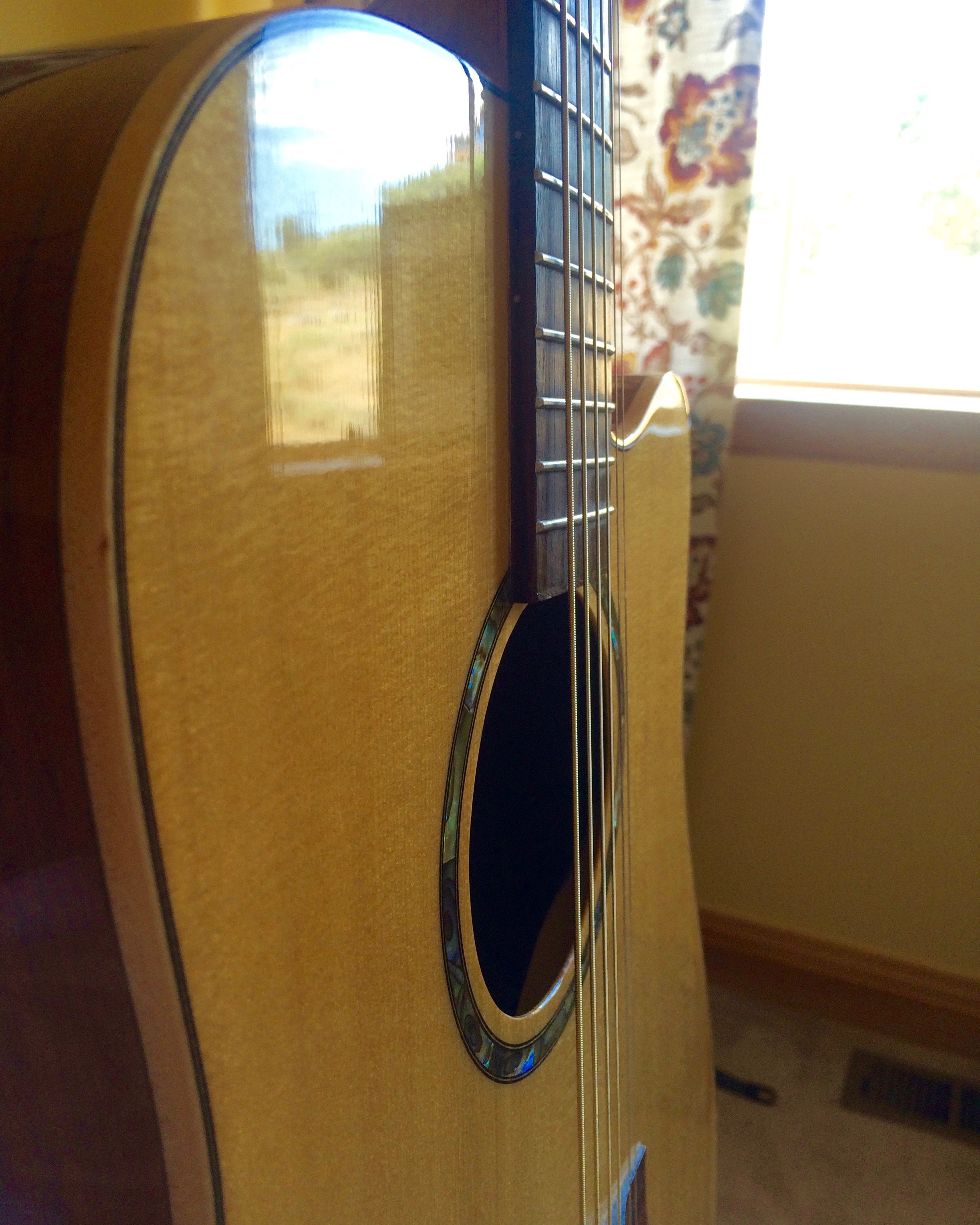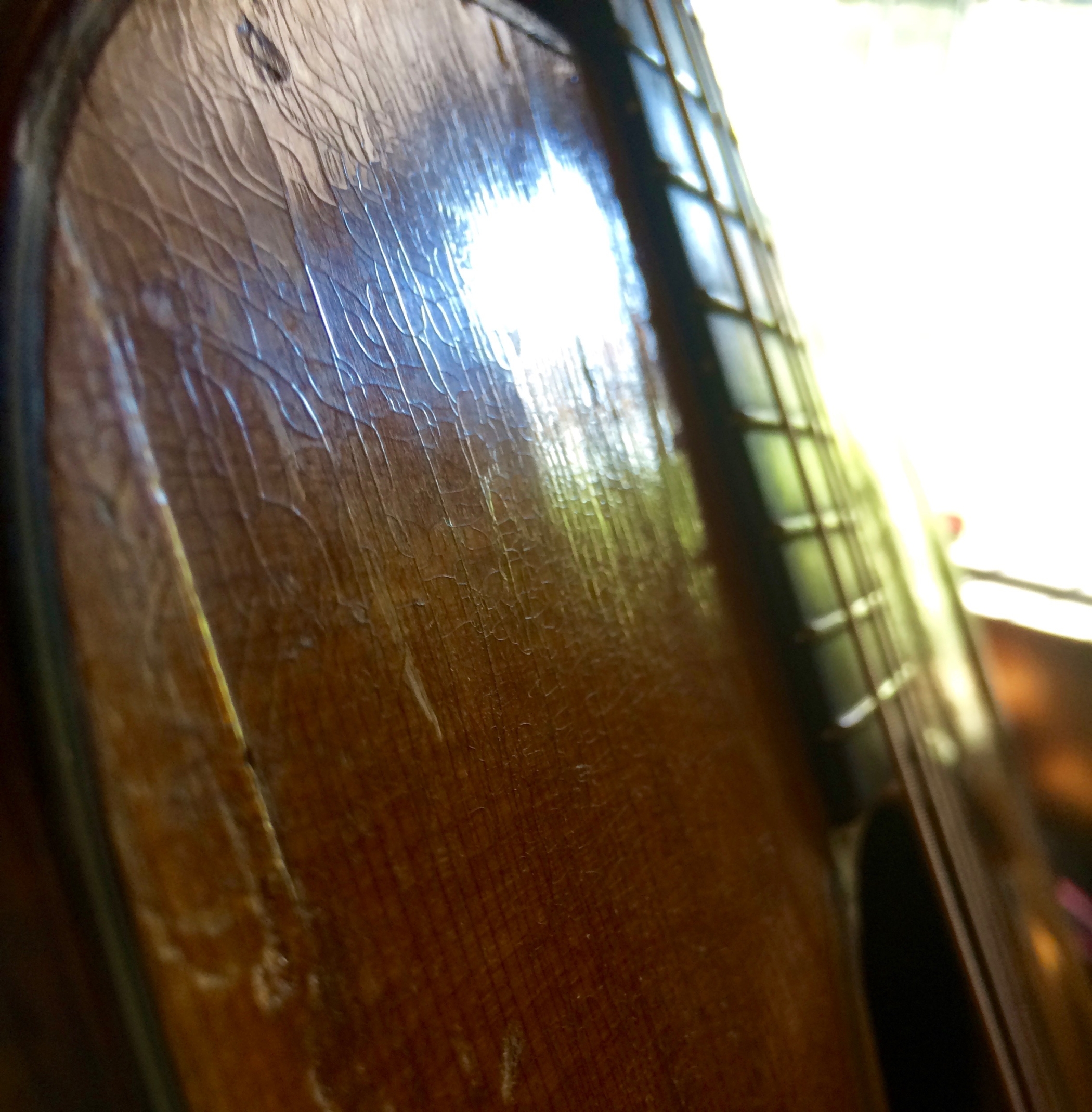No products in the cart.
While working at the local Acoustic Music shop here in Salt Lake City I often sell guitars to first-timers.
These people, who’ve never picked up a guitar before in their whole lives, have made the exciting decision to learn to play it. Then something interesting happens at the checkout counter. They get this stupefied look on their faces as they realize: ‘So I’ve got the guitar … now what?’ Now it’s time for guitar maintenance.
Guitar Maintenance 101
It’s one thing to decide to learn to play, but taking care of this fragile instrument is every bit as important and far too often overlooked. It doesn’t take much – the title of this piece is ‘Guitar Maintenance 101’, not ‘Guitar Maintenance 401’– but neglect its care entirely and you may find yourself without a playable instrument at all!
‘Neglect [your guitar’s] care entirely and you may find yourself without a playable instrument at all!’
Here are the five main components of guitar setup and basic maintenance:
1. Cleaning
Like anything that gets regular use–clothes, cars, computers, carpets–guitars get dirty after awhile. It’s up to you to keep her clean and looking good! Depending on the type of wood and finish, different parts have different cleaning needs:
Finished Wood (typically the top, sides, back, neck, and headstock)
- Use a clean, slightly damp cotton cloth and lightly wipe down the body. For ‘non-gloss’ finishes like satin or matte, this is the only step for cleaning the body.
- For ‘gloss’ finishes like polyurethane or nitrocellulose, use a mild, non-abrasive guitar polish (my store uses this one) and a clean cotton cloth to lightly rub the body and bring back that shine!
NOTE: Some guitars have gloss finish only on the top but NOT on the back and sides. Always check the specifications of your exact model.
Unfinished Wood (typically the fingerboard and bridge)
- Apply a small amount of guitar-approved oil (linseed, lemon, or a blend; my store uses this one) directly to the wood. Use a finger to spread it evenly.
- Allow a few minutes for the oil to penetrate.
- Wipe off the excess oil with a clean cloth (or my store uses c-fold paper towels). Be sure to remove any oil that might’ve leaked onto the guitar body.
2. Strings and Tuning
The most obvious piece of guitar maintenance is to keep the strings fresh and in tune. Keeping your guitar in tune isn’t just important for playing the guitar – it also helps the instrument maintain its proper shape.
Tuning
The strings exert an incredible 150+ lbs. of pressure on the neck and bridge! The instrument is built to withstand this tension, but if you detune the guitar too far or loosen any of the strings, the change in pressure can twist and warp the wood – even permanently! Always keep your guitar in tune (or close to it).
‘The strings exert an incredible 150+ lbs. of pressure … [a major] change in pressure can twist and warp the wood – even permanently!’
It’s also a good idea to apply some lubricant to the tuning machines every now and again – not more than twice per year – to keep them turning smoothly (my store uses Vaseline).
Regular Re-strings
After a time the strings may begin to sound dull, have difficulty staying in tune, or look discoloured. All of these are signs that it’s time for a restring. A YouTube video (like this one) can show you how its done, or you can take it in to a local shop if you’re willing to pay a few dollars (my shop charges $8 plus cost of the strings). This should only take about 15 minutes.
3. Humidity and Temperature
The two biggest enemies by far for any acoustic instrument are humidity and temperature. Indeed, many a fine instrument has fallen prey to the brutal attack of these formidable foes. Extremes in either can cause a variety of mishaps including finish checking, wood warping, cracks, or even failure of the glue between parts.
The ideal environment for an acoustic guitar is 50% relative humidity and 75 degrees Fahrenheit, which is what most guitar manufacturers – including Collings, Taylor, and Martin – keep their factories set at. A little deviation from this happy medium is acceptable, but I would try to keep it between 30–60% humidity and 50–80 degrees Fahrenheit.
More important than the humidity or temperature themselves is to avoid – at all cost – rapid changes in environment. Since every acoustic guitar is a combination of pieces, different parts will shrink or expand at different rates. If the environment changes too quickly you will permanently damage your guitar.
‘Avoid – at all cost – rapid changes in environment.’
Best Practices
- Keep your guitar’s environment as close to 50% humidity and 75 degrees Fahrenheit as possible
- Use a humidifier (like this one; or this one) and humidity indicator card (HIC) as needed (find here). For long-term storage use humidity packets (like these).
- Keep your environment as homogenous as you can; avoid rapid changes in humidity or temperature. (For instance, avoid hanging your guitar on an exterior wall in wintertime).
- If you are going between vastly different environments, leave the guitar in its case for a few minutes to safely adjust before you take it out.

The truss rod screw. Adjusting the truss rod can straighten out a bowed neck, but be careful – a couple bad turns can permanently damage your guitar.
4. Adjustments
For a proper guitar setup there are three common adjustments that can be made. These are the nut and saddle adjustments – usually with regards to the ‘action,’ or height of the strings off the fingerboard – and truss rod adjustments, which can help straighten out a bowed neck.
- Nut
- Saddle
- Truss Rod
Make it a point to visit your local shop biannually to have your guitar inspected by a professional. He or she will be able to tell whether your guitar needs these adjustments or others and can perform them for you, usually at a low cost (my shop charges $5–$20).
5. When Traveling
The acoustic guitar is probably the most well-travelled instrument in the world (see ‘Why Guitar Is the Best Musical Instrument’). Unfortunately, it’s not the most durable instrument. Here are the best travel practices:
By Car
- Take it in a hard case (optimal) or a gig bag.
- Bring a portable humidifier and humidity indicator card for long-distance journeys through different environments. Use as needed.
- NEVER put the guitar in the trunk – ‘trunk weather’ is extreme in any environment. Leave it in the back or passenger seat. If you are worried about visibility, bring a blanket or towel to cover it.
‘NEVER put the guitar in the trunk’.
By Plane
- Take it in a hard case (optimal) or a gig bag.
- Bring a portable humidifier and humidity indicator card. Use as needed.
- DO NOT check it. Take it as a carry-on item. Obama recently signed the ‘FAA Modernization and Reform Act of 2012’ that requires airlines to make accommodations for musical instruments, so you now have a legal right to do this (within certain parameters).
- If the overhead compartment is full you may ask to have it ‘hand-carried’ (like the strollers and wheelchairs). They’ll tag it and carry it by hand from the jet bridge to the plane’s belly. When you deplane, they should retrieve it from the belly and return it to the jet bridge. Check the instrument to make sure it’s in good shape. I’ve never had an issue, but then again I’d hate to have one and end up like this guy.
- Only detune a full step (i.e. from E standard to D standard tuning, shown here) at most for the journey, though this is not necessary. Remember, it’s important to maintain string tension so the guitar holds its shape.
Follow these five basics of guitar maintenance and your guitar will always be in great shape. It’s not rocket science, but it does require some diligence. Whether Taylor or Teton, Collings or Cort, every guitar can be made to last – you just have to take good care of it.

Cody is a professional singer, songwriter, performer, and recording artist. His instruments include bass, trumpet, drums, harmonica, piano, and most especially guitar. In his spare time he travels, brands businesses, and makes lists of his many accomplishments.
Cody is a student at the University of Utah under his own self-created degree, Music Business and Technology, and recently returned from four months living in Kathmandu, Nepal, providing humanitarian aid to the victims of the recent earthquake.
Watch the music video for ‘Batti Ayo’, Cody’s tribute to the Nepal quake victims, at codyrobinsonmusic.com
Or follow him on Instagram: @codyculture







